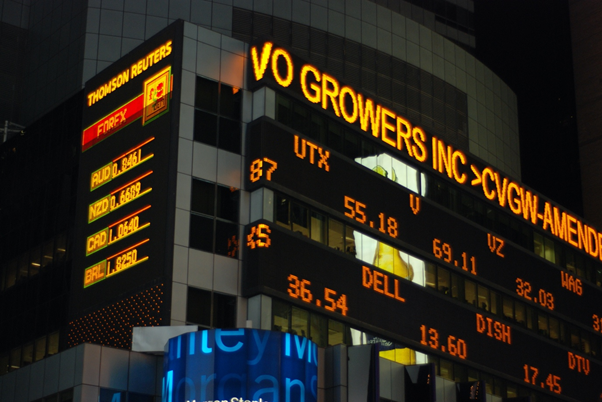What is market capitalisation?
Market capitalisation is one of the ways employed to evaluate the valuation of a company. This aggregate valuation is based on the current market price of the company’s shares and the total number of outstanding stocks.
One needs to make the calculation to determine the company valuation. It is primarily outlined by the total market value based on the company’s outstanding shares. This simply means that evaluation by this method can be done only for businesses that are publicly traded.

Source: © Djbobus | Megapixl.com
Why is it essential for investors?
Understanding and calculating market capitalisation of a business are essential, especially for investors, as it guides them make sound investment decisions.
A company’s correct value evaluation can help investors choose the right shares to invest in as per their need. However, it is imperative to keep in mind that various internal and external factors can also impact the number, as market capitalisation is based upon the value of the company’s current shares and number of outstanding stocks.
The share price of a listed company can move in an upward or downward direction due to multiple factors, such as critical financial announcements made by the company, changes in the management or structure, fluctuations in market conditions, etc.
As these factors impact the price of the company’s current shares, the market capitalisation also changes, going up or down with increase or decrease in the numbers. From an investor’s standpoint, evaluating market capitalisation using this method is crucial, especially while charting a long-term investment plan.
Additionally, the returns and risks associated while investing in a particular company are also imperative for the investors. Market capitalisation plays an important role in aiding the investors while choosing stocks that meet their criteria while investing in various companies to maintain the portfolio.
Meanwhile, it is vital to keep in mind that the market capitalisation demonstrates the stage of a company’s development.

Source: © Noamfein | Megapixl.com
What are the types of companies based on the market cap?
Knowing the formula employed to calculate the market capitalisation can provide clarity to investors.
For instance, a particular company has 10 million outstanding shares, and the current market price is $100 per share. In this case, market capitalisation of the company will be 100,00,000 x 100 = 1,000,000,000.
The stocks of listed companies fall into three categories based on this popular method of evaluation. Investors usually choose stocks from judging market capitalisation valuation.
Usually, investors also decide for balanced investment in different combinations of stocks with different market capitalisation to minimise risk.
- Stocks of companies with a market capitalisation of $10 million or above fall under the category of large-cap stocks.
- Companies with a market capitalisation in the range of $2 billion to $10 billion are called mid-cap players or mid-cap stocks.
- Companies with a market cap of $300 million to $2 billion are called small-cap stocks.
Large-cap stocks:
Companies with large capitalisation are usually considered stable businesses in the market. Thus, investing in large-cap companies is less risky compared to investing in other stocks.
Though these are companies have a significant market cap, the returns they offer are generally on the lower side. It is believed that these companies have reached the highest point of their development by being in the market for many years and providing a stable performance for years.
Thus, even with major announcements that could have a significant impact on the share price, investors are unlikely to see any significant change in their share price. Investing in large-cap companies offers minimum risk, and the growth is also less aggressive than emerging companies. Therefore, investment in a large-cap company is considered conservative.
Mid-cap stocks:
Companies with mid-range market capitalisation are poised for particular growth. These companies are also somehow stable, making them deliver a promise of future growth.
Most importantly, they demonstrate that the business is set up in a particular way. Investing in mid-cap companies can be riskier compared to investing in large-cap companies. Though these companies are not fully established like the large-cap companies, these stocks have growth potential.
On a positive note, investing in mid-cap companies is less risky than the small-cap ones. Notably, the returns mid-cap companies can offer are usually higher than the large-cap companies, making it attractive for the investors.
Small-cap stocks:
Investing in companies with small market capitalisation is a precarious step. However, these stocks are lucrative to many investors.
Small-cap companies are new in town; they are up-and-coming and not very much established in the industry than the mid-cap and large-cap ones, making them highly risky.
However, investors’ risk would be highly paid off if these players find success, as they hold strong potential to grow. Therefore, investing in small-cap stocks can be an aggressive investment option.

Source: © Lovelyday12 | Megapixl.com
Important aspects of valuation to keep in mind:
While evaluating the market capitalisation of a company, investors need to study a few critical areas that could impact investment decisions.
Following are the relevant ratios to take into consideration.
Price-to-earnings ratio: One of the critical ratios is considered while evaluating any company’s market capitalisation is the price-to-earnings ratio. While buying shares of a particular company, this ratio will help the investors project returns for the future.
Detailed discussion at: Price to Earnings Ratio - (P/E Ratio)
Price-to-free-cash-flow ratio: This ratio is also utilised to measure the expected returns.
Price-to-book value: This ratio is calculated by deducting the total value of liabilities from the total book value of the company's assets.
Enterprise-value-to-EBITDA: This ratio helps investors evaluate and measure the operational returns generated in the short term.
Free-float market cap: The number of outstanding shares that are kept for investors to trade publicly is called float. This method excludes the shares owned by the company's executives.
 Please wait processing your request...
Please wait processing your request...